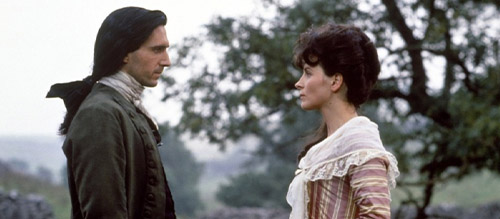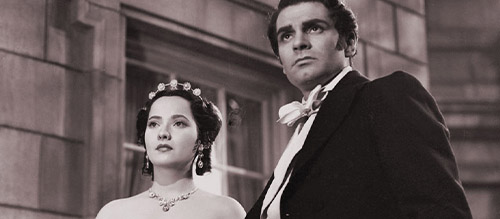Wuthering Heights Films Ranked
“Wuthering Heights” by Emily Brontë has been adapted numerous times in many forms. From the big screen to the small screen, the stage to Kate Bush’s 1978 classic song “Wuthering Heights”, it has proven to be a useful source for many a creative endeavour.
The central narrative of “Wuthering Heights” follows ‘adopted’ child Heathcliff and his relationship to the central family’s daughter, Cathy, out on the wild and windy Yorkshire moors. It is a novel famous for its passion and all consuming drama. Of the numerous adaptations there are four English language feature films.
In this edition of Ranked, we’re ranking each of these Wuthering Heights feature films from worst to best in terms of artistic merit and critical/popular consensus. We are not ranking these films based on which adaptation is the most accurate.
Follow @thefilmagazine on X (Twitter).
4. Emily Brontë’s Wuthering Heights (1992)
Emily Brontë’s Wuthering Heights begins with a cloaked and wigged Sinead O’Connor (yes, that one) as Emily Brontë. She begins to tell the story of “Wuthering Heights” with an of-its-time sincerity, which is the first sign of the campy and theatrical madness that is to come in this wholly 90s affair…
Ralph Fiennes, in his feature film debut, plays Heathcliff as entirely unlikable; hellbent on revenge and happy to ruin the lives of everyone around him, even that of his beloved Cathy. His Yorkshire accent is the poshest Yorkshire accent you have ever heard, it is vaguely northern at best, while Cathy is played by Juliette Binoche, a very clearly French woman imitating a strong and distinct dialect foreign to her native tongue. The impression is hardly convincing, and next to Fiennes’ loud and camp portrayal of Heathcliff, she feels quiet and particularly small.
In terms of the film’s central relationship, which is supposed to be passionate and all-consuming, this version of Wuthering Heights illustrates the love between these two characters through proximity and not much else. They lie next to each other a lot, and that’s supposed to be enough for us to believe in their never-ending passion for one another, but it simply doesn’t work.
Moreover, the two teenagers are played by adults – Fiennes being 30 and Binoche, 28. This of course detracts from the moment we see Heathcliff return to Yorkshire after years of exile, as the adult Fiennes returns looking exactly the same age and thus all shock and/or appeal is lost. This is something so notable that the next chronological Wuthering Heights movie, released in 2011, made casting two different actors (per character) a priority, the time between the couple’s lives as children and their more complicated adulthood represented through vast physical change.
Another stylistic choice was to have Binoche pay both Cathy (Mother) and Catherine (Daughter). This should have been to emphasise that they look so much alike, but it added yet more campness to the film, Binoche even sporting an 80s-style blonde perm and two different shades of light foundation.
Overall, Emily Brontë’s Wuthering Heights is an overly melodramatic and completely unbelievable love story that features some of the worst accents you’ll ever hear. Even perms didn’t age this badly.
3. Wuthering Heights (1939)
In this William Wyler-directed adaptation, the story of “Wuthering Heights” is transported to later in the 19th century, creating a much more stiff-upper-lip style of courtship and love. The Lintons have grand parties with more Austen-style balls, an indicator as to how this version feels very much as if it’s the English as viewed from afar (and with rose-tinted spectacles) by the Americans. The picture was actually filmed in California, with the moors being filmed in Thousand Oaks, and the lack of accuracy doesn’t stop there, lots of inconsistencies in costume and the film’s music making for timeline nitpicks that can completely destroy any enjoyment in this film.
This sweeping epic does make the best use of silence and music (in a thematic sense) that the series has to offer however, giving it the most dramatic of melodramatic feels.
In keeping with this, the actors look at each other with longing and lust in a manner typical to classic Hollywood movies, but in this version of Wuthering Heights, these longing looks aren’t enough to convince anyone of the central relationship. Heathcliff is passionate, but Cathy is changing, and their connection does not translate.
Cathy constantly asks Heathcliff to leave in this version of the story – we actually see much more of Cathy and Edgar’s relationship which seems to make much more sense than that of Cathy and Heathcliff’s. It has been widely reported that Merle Oberson (Cathy) and Sir Laurence Olivier (Heathcliff) did not like each other at all during filming, which is made quite clear by their relative lack of chemistry.
The cinematography of the film is beautiful and perhaps its standout feature. Rather than being shot in a soft focus as was typical of romances at the time, cinematographer Gregg Toland chose to use high-powered Technicolour arc lamp and faster film stock to achieve maximum contrast between shadow and light. This gives the film a candlelight effect, keeping characters partially in darkness before moving them into light for emphasis. This adds a gothic tone to the film, while reiterating the melodramatic elements. Unfortunately, it’s not enough to save the picture from its distinct lack of a connection between its leads.
Overall, Wuthering Heights (1939) is a beautiful film with groundbreaking cinematic techniques that can’t quite satisfy on a narrative level. It’s an interesting feature to analyse, but is far from the most enjoyable of these adaptations.
Recommended for you: The Railway Children (1970) Review




I was thrilled to see the Dalton version mentioned, and in the top spot. It was the first one I watched back in my early teens In fact this movie inspired me to a lifetime of reading preferences (gothic, Cornwall, historical romance and fiction. Though most movie and tv versions have their merits, I can still see Heathcliff on the moors grieving for Catherine.
Wait, you missed the 2009 one with Tom Hardy (maybe the best one?).
Hi, thank you for inquiring about that. The 2009 version with Tom Hardy was a television special/mini-series and was therefore ineligible for selection.
This is my favorite movie of all times, and I have seen it many, many times. Timothy Dalton is the only Heathcliff. He was perfect. They suited each other so well. The casting in this movie was brilliant and this version captures the heart and soul of the novel by Emily Bronte.
You are so right, but… Ralph finnes is so handsome in the movie 😂
I wholeheartedly agree. The Calder-Marshall/Dalton version is a minor masterpiece. It captures all that West Yorkshire grit and earthiness, and the entire ensemble is faultless: with many great performances. The altered ending may be the compromise they had to make. It’s interesting to speculate whether, with the original ending, the high standard could have been maintained.
Ralph was an outstanding H. Soaring between love, anger, anguish and regret. Scary as shit mean bugger as well. He nailed it. Timothy interpretation of H hardly said boo and was laughable for over acting. Tom was brilliant in his H role but lacked Ralph Intensity. Juliette was brilliant. Who cares that she had a bit of a French tinge to her accent – it just made her sound even more sexy. Including the next generation of all their children in the 1992 adaptation was cool. Keep new versions coming!
I wonder if the author of this article has actually read the book. Her reviews of each film would indicate not.
Lawrence all the way!